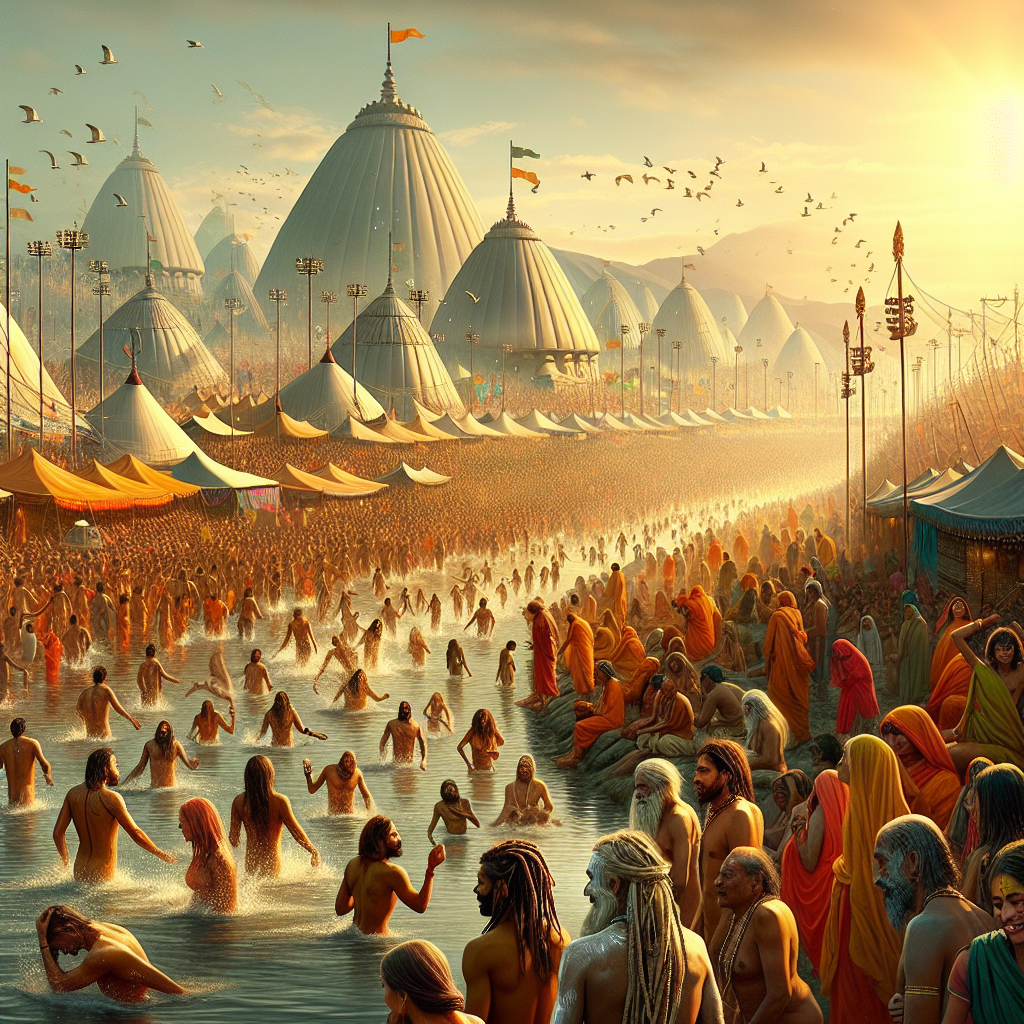Rituals Unveiled: A Day in the Life at Mahakumbh 2025
In the heart of India, where the sacred rivers Ganges, Yamuna, and Saraswati converge, lies the spiritual and cultural phenomenon known as the Kumbh Mela. This mega-religious festival attracts millions of pilgrims, ascetics, and seekers from all walks of life, and the Mahakumbh is the zenith of these gatherings, occurring once every 144 years. The year 2025 marked an extraordinary Mahakumbh in Haridwar, a city steeped in mythology and spirituality.
Dawn: Awakening and Preparation
As dawn breaks over the horizon, the first rays of sunlight glisten on the waters of the Ganges, inviting pilgrims to immerse themselves in its sacred embrace. The air is filled with the gentle sound of temple bells, calling devotees to morning prayers. The atmosphere is alive with the scent of incense and flowers, as thousands gather for the auspicious bathing rituals, believed to cleanse the soul and wash away sins.
In camps and makeshift tents, sadhus (ascetics) prepare for the day ahead. Clad in vibrant orange robes and adorned with sacred ash, they perform their morning ablutions and engage in meditation. For these holy men, the Mahakumbh is not just a festival; it is a culmination of years of spiritual practice and dedication.
The Maha Snan: A Community of Faith
As the sun ascends, the scene transforms into a vibrant tapestry of colors and sounds. The Maha Snan, or the grand bathing ritual, draws devotees in droves. Families, young and old, adorn themselves in white clothing, signifying purity as they head toward the riverbanks. The anticipation is palpable as they form human chains, chanting mantras and singing devotional songs.
Entering the sacred waters, they collectively plunge into the Ganges, raising their hands in gratitude and seeking blessings. The spectacle is mesmerizing, with the mighty river flowing with both water and the collective energy of millions seeking divine connection. Each dip is a reaffirmation of faith, an offering of sincere prayers for health, prosperity, and peace.
Midday: The Gathering of Sages and Shankars
As the sun climbs higher, the atmosphere becomes a carnival of spiritual vigor. The akharas, or sects of ascetics, hold processions showcasing their unique traditions. The sight of Naga sadhus with their bare bodies smeared in ash, wielding tridents, evokes an atmosphere of reverence and awe.
Throughout the grounds, groups engage in discussions on philosophy, spirituality, and the essence of life. The poignant exchange of wisdom between learned sadhus and eager seekers reflects the essence of the Mahakumbh—not merely a spectacle of rituals, but a deep plunge into the soul of Indian spirituality.
Afternoon: Spiritual Workshops and Cultural Festivities
As rituals wane, the afternoon transitions into cultural exchanges. The Mahakumbh serves not only as a religious gathering but also a platform for cultural enrichment. Workshops on yoga, meditation, and Ayurvedic healing attract interested participants.
Artisans display their crafts, and food stalls offer a taste of local cuisine, enhancing the community atmosphere. Every corner resonates with music—bhajans and kirtans fill the air, while dance performances and street plays recount the tales of mythology and spirituality, bridging generations.
Sunset: Reflection and Ritual
As the golden sun dips toward the horizon, the sense of spirituality deepens. The evening aarti (prayer ceremony) brings the riverbanks to life. Thousands gather, their faces illuminated by the flickering lights of diyas (lamps) as they wave them in unison, chanting divine hymns. The river transforms into a shimmering line of fire, symbolizing a bridge between the earthly and the divine.
In the quiet moments that follow, individuals find a space for reflection, grasping the ephemeral nature of their experiences—each moment savored, each interaction meaningful. In the flicker of the lamps, many discover a deeper understanding of faith, community, and the spiritual journey that binds them all.
Night: The Celestial Dance of Stars
As night envelops the Mahakumbh, the atmosphere shifts to one of serene contemplation. Many choose to camp along the riverbanks, sharing stories and experiences while gazing at the starlit sky. For many, this is a time for personal rituals—recalling ancestors, whispering prayers, and seeking guidance from the cosmos.
The Mahakumbh concludes not merely as a series of rituals but as a transformative journey, etched in the hearts of all who partake in its glory. As the waves of the Ganges caress the shores, they carry away sorrows, cleansing spirits and hearts alike.
Conclusion: A Tapestry of Divinity
The Mahakumbh 2025 was not just a celebration of faith; it was a journey into the depths of human experience—a reminder that amidst the chaos of life, the essence of spirituality anchors us. Each day at Mahakumbh unfolds as a rich tapestry, interwoven with threads of devotion, culture, and the undying human spirit, inviting every soul to explore the divine within. As pilgrims return to their homes, they carry with them not only memories of rituals witnessed but also a renewed sense of purpose and connection to the universe.

